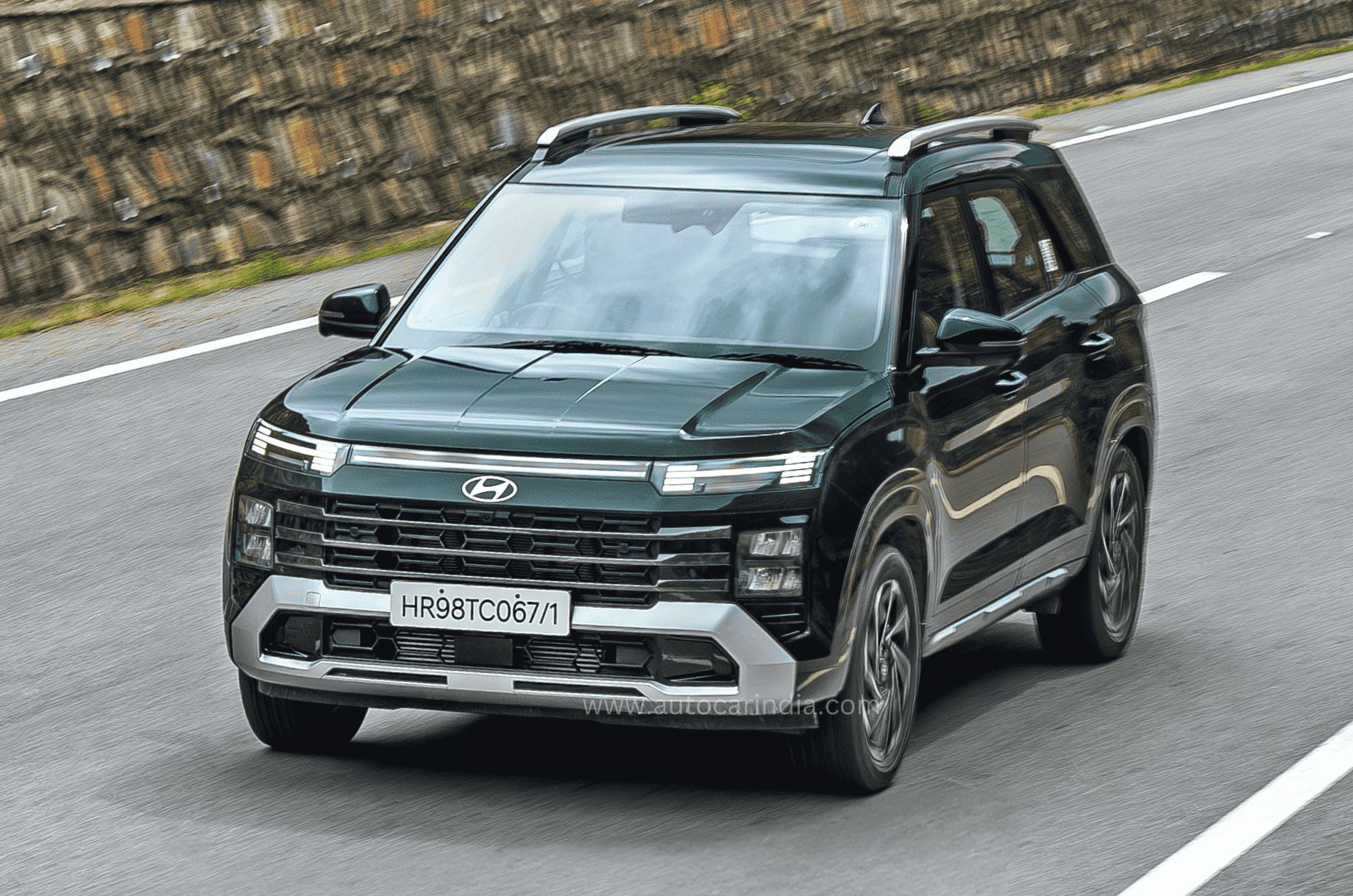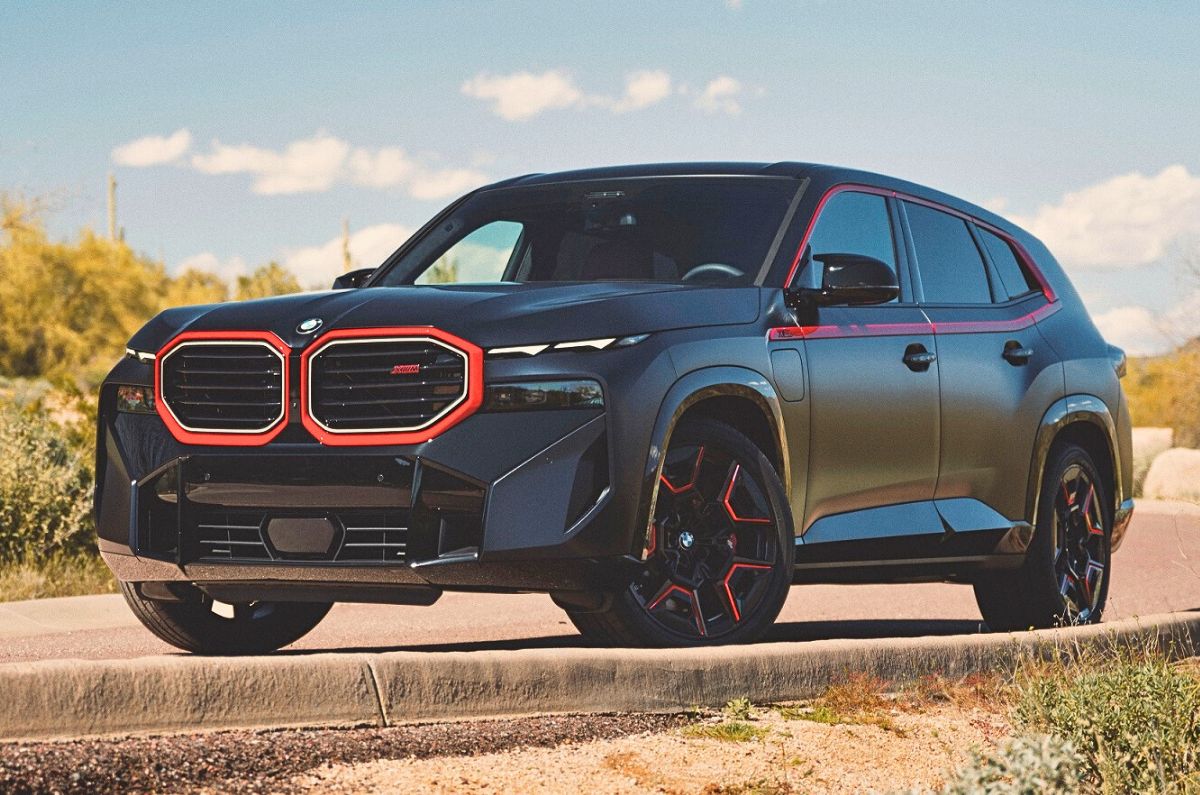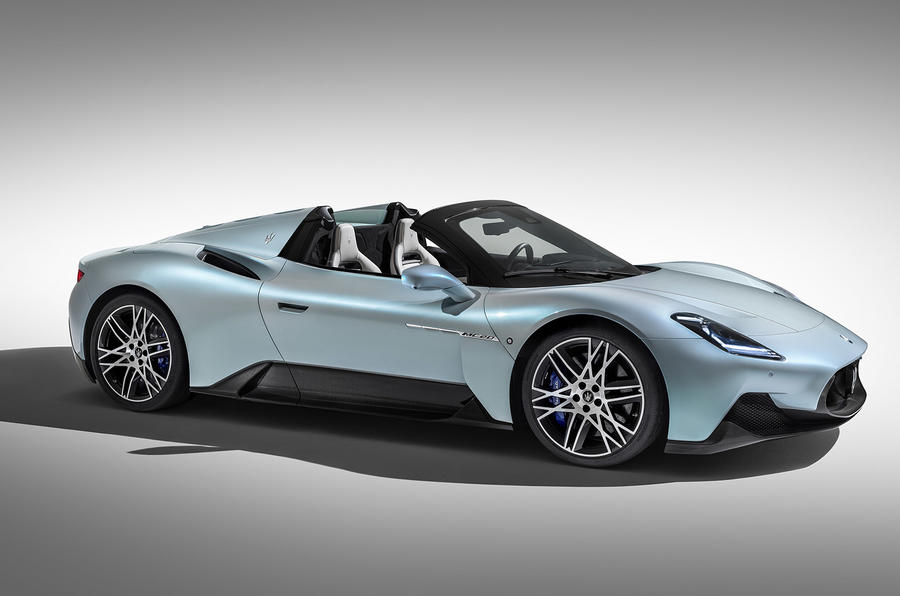Apart from a striking design, the Curvv comes with a new direct-injection turbo-petrol and a segment-first diesel-DCT powertrain. Is that enough to compete in the midsize SUV segment?
The all-new Curvv marks a lot of firsts for Tata Motors – first TGDi (Turbocharged Gasoline Direct Injection) engine, first diesel dual-clutch auto powertrain and its first step up into the midsize SUV segment. While this segment is already crowded with SUVs like the Creta, Seltos, Grand Vitara, Elevate, Kushaq, Astor and others, the Curvv aims to stand out, quite literally, with its design. We’ve sampled two powertrain options and here’s what we made of it.
Tata Curvv platform, dimensions and design
Underpinning the Curvv is Tata’s ATLAS modular platform that debuts here. Tata Motors says that while the ATLAS can underpin various body styles, it has been optimised for ‘genuine SUV capabilities,including 4x4.’ That’s quite a claim and we are not sure Tata Motors has engineered this platform to accommodate a propellor shaft for the rear axles.But for now, there are no plans for a 4x4 Curvv given the limited demand.
As for dimensions, the Curvv measures 4,308mm in length, 1,810mm in width and 1,630mm in height, which puts it in the same ballpark as rivals – its 2,560mm wheelbase is the smallest. The boot is a voluminous 500 litres, which can be further expanded thanks to the split-folding rear seat. The ground clearance is also a substantial 208mm with the stylish 18-inch alloys and 215-section tyres this top-spec model rides on. You also get a full-size spare tyre.
 Design changes over the EV include a different front grille and alloy wheels.
Design changes over the EV include a different front grille and alloy wheels.
Since styling is subjective, I'll keep this short and sweet. The Curvv’s concept car-like design may not be to everyone’s taste but you have to admit that it grabs attention. A big change over the Curvv EV is at the front end, where the closed-off grille has been replaced with a proper two-part grille with a larger airdam lower down. The LED Daytime Running Lamps are connected, the main headlamp cluster is on the outer edges of the bumper and you get a faux skid plate, too. In profile, the only difference from the EV is the design of the alloys.

Large 500-litre boot can be further expanded thanks to the split-folding rear seat.
Other than that, it continues to feature flush door handles and the glossy piano black cladding around the wheel arches and lower portion of the door. While this does look good and help break up the visual mass, we’re not sure how resistant it’ll be to scratches. The characteristic raked roofline gels neatly at the rear, where there is a full-width LED light bar, spoiler-like elements on the tailgate, some more black cladding and a faux skid plate in silver. It doesn’t get a rear wiper as it’s a coupe-SUV, sovisibility out the back isn’t good. Completing the look is a contrast, gloss black roof and black mirror caps. The Curvv can be had in six exterior colours, and the Gold Essence shade you see here is my favourite.
Tata Curvv interior and features
Step inside and you’ll like the contemporary and upmarket feel the Curvv’s cabin exudes. A big part of that is down to the burgundy-coloured leatherette upholstery this range-topping Accomplished+ A variant gets, which looks rich to my eyes. But if you don’t like it, fret not – the upholstery colour is different for each ‘persona’ of the Curvv.

Dash is similar to the Nexon save for different textures; burgundy upholstery looks premium.
The dashboard is lifted straight off the Nexon, but Tata has given it different textures. The steering wheel, which is from the Harrier/Safari, is nice to look at, but it isn’t very nice to hold as the edges of the centre spoke obstruct and the wheel is angled slightly away from the driver. What is very nice to look at and operate, though, are the screens. The crisp, 12.3-inch touchscreen is quite slick, the UI is easy to navigate, and we faced no glitches in our time with the car. The fully digital instrument cluster is also high in resolution and it's easy to work your way around the menus. However, some of the data appears a bit too small and you’ll often find yourself taking a second look at the screen. Also, the rev counter is a bar-like circular graphic that isn’t easy to read. The navigation can be displayed as a full screen on the cluster, which is a nice touch.
Like on newer Tatas, the Curvv also gets a touch-based gloss black HVAC control panel with physical toggles for the fan speed and temperature control. While it is fairly easy to operate, certain functions will require you to take your eyes off the road and the panel is a fingerprint magnet. There’s also configurable ambient lighting on the dash, and uniquely, around the panoramic sunroof. Other features include a superb-sounding JBL audio system, an air purifier, voice commands, wireless charger and a segment-first powered tailgate with gesture control.

Navigation can be displayed as a full screen on the instrument cluster.
The Curvv also packs in Level 2 ADAS tech, and in our short time with the SUV, these systems worked fairly well. However, the lane keep assist isn’t smooth and doesn’t stay absolutely centred in the lane. On some occasions, the system also didn't recognise lane markings. What is a boon though is the blind view monitor, which can be displayed in the instrument panel or the touchscreen, and the crisp 360-degree camera.
There's also connected tech via Tata’s iRA app that lets you remotely control functions like lock/unlock, AC, engine start/stop and more. It'll also give you updates if/when your car crosses the speed limit, which is a useful safety feature. Speaking of safety, the Curvv gets 6 airbags, ISOFIX mounts, hill-hold and ESP as standard, while higher variants pack in TPMS, electronic parking brake and auto headlamps/wipers. It’s clear then that Tata Motors has left no stone unturned when it comes to features.

Tata iRA connected tech app lets you control various functions of the Curvv.
The front seats are comfy and accommodating, and in this variant, are ventilated as well. Both seats are 6-way adjustable, but the driver’s seat can be done so electrically while the passenger’s seatis manual. The longer wheelbase over a Nexon means there’s more legroom at the back, but like on the Curvv EV, the sloping roofline means headroom is less. The reclinable back rest and scooped-out headliner help matters,but taller passengers will find headroom tight. It won’t be the most comfortable for three adults and a centre-adjustable headrest is missed. What is an improvement over the EV though is the underthigh support, as there’s no battery under the floor and your feet aren’t pushed up. Rear seat passengers get AC vents, USB ports and a centre armrest with cupholders.

6-speed manual has long throws and the lever is odd to look at.
While material quality is largely acceptable, what is a let-down is the fit/finish in certain places, which isn’t up to the Seltos’ class-best levels. Also a downer is the ergonomic shortcomings in this cabin. The front cupholders are unusable as they’re placed inside the cooled and illuminated glove box, and shockingly, there isn’t a cupholder in the centre console. The USB/12V socket recessed ahead of the gear lever is hard to reach, the front centre armrest is too small and won’t slide, and the storage space below it can only fit small items.
Tata Curvv powertrains and performance
The Curvv gets three engine options: a 1.2-litre, three-cylinder turbo-petrol mill that makes 120hp and 170Nm; a 118hp, 1.5-litre diesel unit; and Tata’s new 125hp, 1.2-litre direct-injection turbo-petrol ‘Hyperion’ engine. All three engines are available with a 6-speed manual as standard, along with a 7-speed dual-clutch automatic option, making it the only mass market diesel car in India to offer a dual-clutch auto. We got to sample the TGDi-manual and the diesel-DCT on our drive.

Tata's new direct-injection turbo-petrol is refined and offers good flexibility.
Starting off with the new engine, the ‘Hyperion’ has the same displacement as the other turbo-petrol but it makes 5hp and 55Nm more thanks to tech like the 350-bar fuel injection system and sodium-cooled exhaust valves. The engine is pretty refined at idle thanks to a dual-mass flywheel, but some of that typical, three-cylinder thrum is evident although it isn’t loud or intrusive. This engine, with its 225Nm of torque, has good response off the line and it also responds keenly to throttle inputs. However, there is noticeable turbo lag under 2,000rpm when driving in a spirited manner and the mid-range feels a bit flat. This engine likes to be revved and feels very refined even at the rev limit. Performance is adequate and a 0-100kph sprint in 11.96 seconds is quite decent, placing it just shy of the Skoda Kushaq 1.0 TSI MT’s 11.47 seconds time. The engine does offer good flexibility though, which is reflected in its in-gear timings that are quicker than the Skoda. Do note though that the Curvv’s figures are not to our usual test standards.
The 6-speed manual paired with this engine is the latest iteration of Tata’s manual gearbox. Shifts are smooth enough but the long throws and the snappy action of the clutch pedal do rob you of some engagement. The gear lever, too, which is shared with the Harrier, is odd to look at and hold.
| Test | 1.2 TGDi MT (not to test standards) | Kushaq 1.0 TSI MT |
| 0-100kph | 11.96sec | 11.47sec |
| 20-80kph | 9.17sec | 10.41sec |
| 40-100kph | 11.12sec | 14.39sec |
In the midsize SUV segment, the Curvv is one of the few products that still offers a diesel option. The 1.5-litre ‘Kryojet’ unit makes 118hp, 260Nm and it comes with Tata’s smart, passive SCR emissions control system that makes do without a lot of expensive emissions hardware like a Urea tank and independent ad blue injection system. This four-cylinder unit is relatively smooth at idle but as you rev it, it does sound gravelly and boomy inside the cabin. On the move, there’s some turbo lag below 1,500rpm but past that, it does pull strongly.

Curvv diesel makes do without an ad blue injection system.
And in a segment and Tata first, the diesel is paired with a 7-speed dual-clutch automatic that features clever tech like wet clutches with active cooling, a self-healing mechanism and machine learning. This DCT, like most DCTs, feels smooth, quick and jerk-free on the upshifts. It isn’t as lightning quick as the Skoda-VW DSGs, especially while downshifting, but the shifts do feel seamless. What does trip up Tata’s ‘DCA’ is low-speed city-driving conditions, as the gearbox tends to keep shifting between 1st and 2nd, depending on the speed, which makes it feel jerky and results in some head nod. You do get manual control via the paddle shifters, but interestingly, it’ll only rev up till around 3,800rpm – before the DCT upshifts regardless of whether you’re in manual mode – even though it makes its peak power at 4,000rpm.

1.5 diesel pulls strongly past 1,500rpm but is audible inside the cabin.
As for performance, in our preliminary tests, the diesel-DCT did the 0-100kph sprint in 12.34 seconds, while the 20-80kph and 40-100kph runs in kickdown took 6.30 seconds and 8.45 seconds, respectively. In comparison to the Seltos diesel-AT, the Curvv diesel-DCT is quicker throughout on account of its higher output (3hp, 10Nm more).
Also worth noting, both powertrain options come with drive modes – City, Eco and Sports – and they have a mild effect on the throttle, gearbox (automatic) and steering response of the Curvv.
| Curvv diesel-DCT (not to test standards) | Seltos diesel-AT | |
| 0-100kph | 12.34sec | 12.91sec |
| 20-80kph | 6.30sec | 7.54sec |
| 40-100kph | 8.45sec | 10.04sec |
Tata Curvv ride and handling
Now onto what is undoubtedly a highlight of the Curvv, it’s ride and handling. The Tata Curvv feels tough and takes broken patches of road in its stride. The low-speed ride can feel a bit stiff, but the ride smoothens out as you pick up the pace. The suspension also works relatively quietly but what you will hear more of inside is the road and tyre noise. Overall, the Curvv really feels at home at highway speeds, with its composed and mature road manners.

Composed and mature road manners make it feel at home on the highway.
It also keeps body roll well in check around corners, making it feel competent if not particularly sporty. The steering is direct, but it can feel too sharp and heavy in Sport mode. There is some inconsistency at the straight-ahead position, so you’re not completely sure how much lock to give. As for braking, this top-spec version comes with discs all around so stopping power is more than adequate.
Tata Curvv price and verdict
Those interested in a Tata Curvv will be spoilt for choice as there are 34 versions on offer – all engines, gearboxes and trim levels accounted for. You get the widest choice across the diesel engine and Revotron petrols, while the Hyperion petrol is restricted to the mid- to top-spec variants. The Curvv’s pricing starts at Rs 10 lakh and tops off at Rs 19 lakh (introductory, ex-showroom), which is competitive for this segment. Buyers will also appreciate the 3 year/1,00,000km standard warranty it comes with.
The Curvv’s coupe-SUV form factor is what makes it stand out, although the radical design maybe a bit polarising.

There are as many as 34 versions of the Curvv for buyers to choose from.
As a product, the Curvv has strengths in its tough feel and long list of features. The new direct-injection turbo-petrol is pleasant to use and users with lots of running will find a good match in the diesels. The big 500-litre boot is also a boon, but what marks the Curvv down is the limited rear-seat space. In fact, the Curvv feels half a size smaller than the segment leaders and isn’t quite the Creta fighter it was intended to be. In fact, you can think of the Curvv as more of Nexon '+' or a Creta '-', and Tata’s aggressive pricing alludes to this positioning.
Also see:

 19 hours ago
3
19 hours ago
3








 English (US)
English (US)